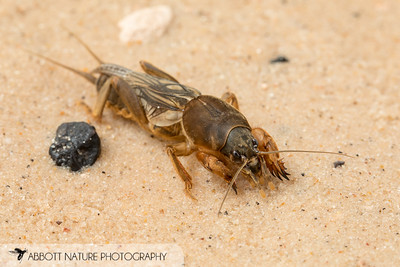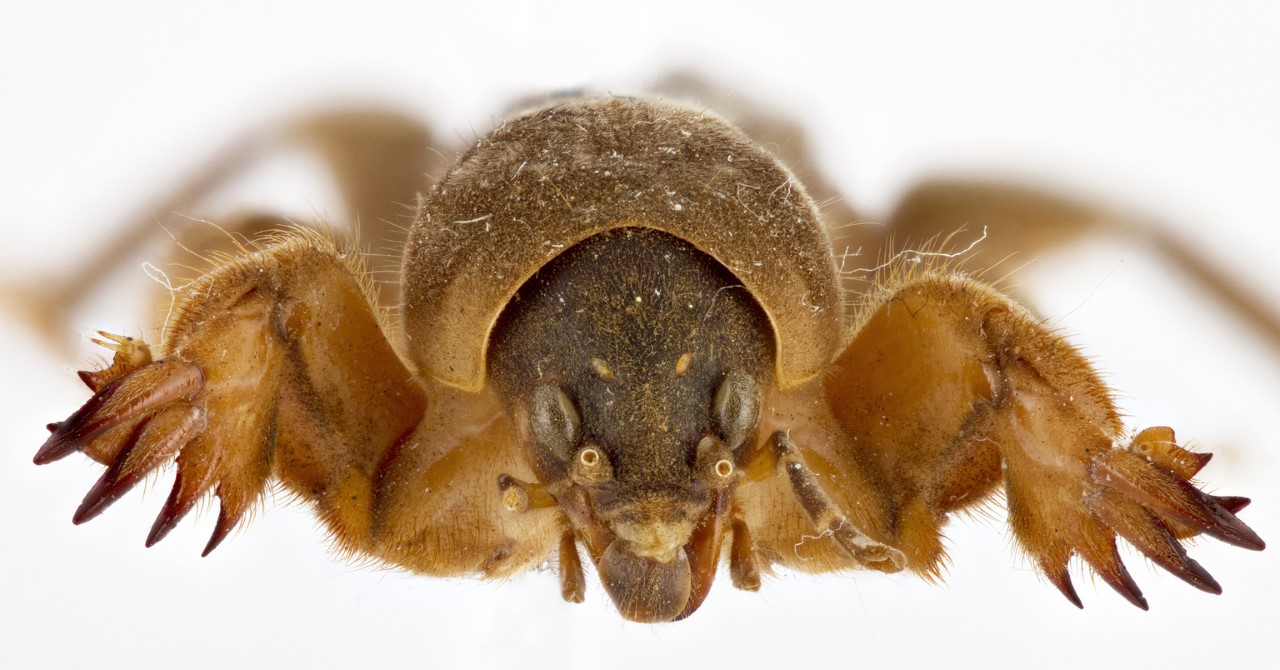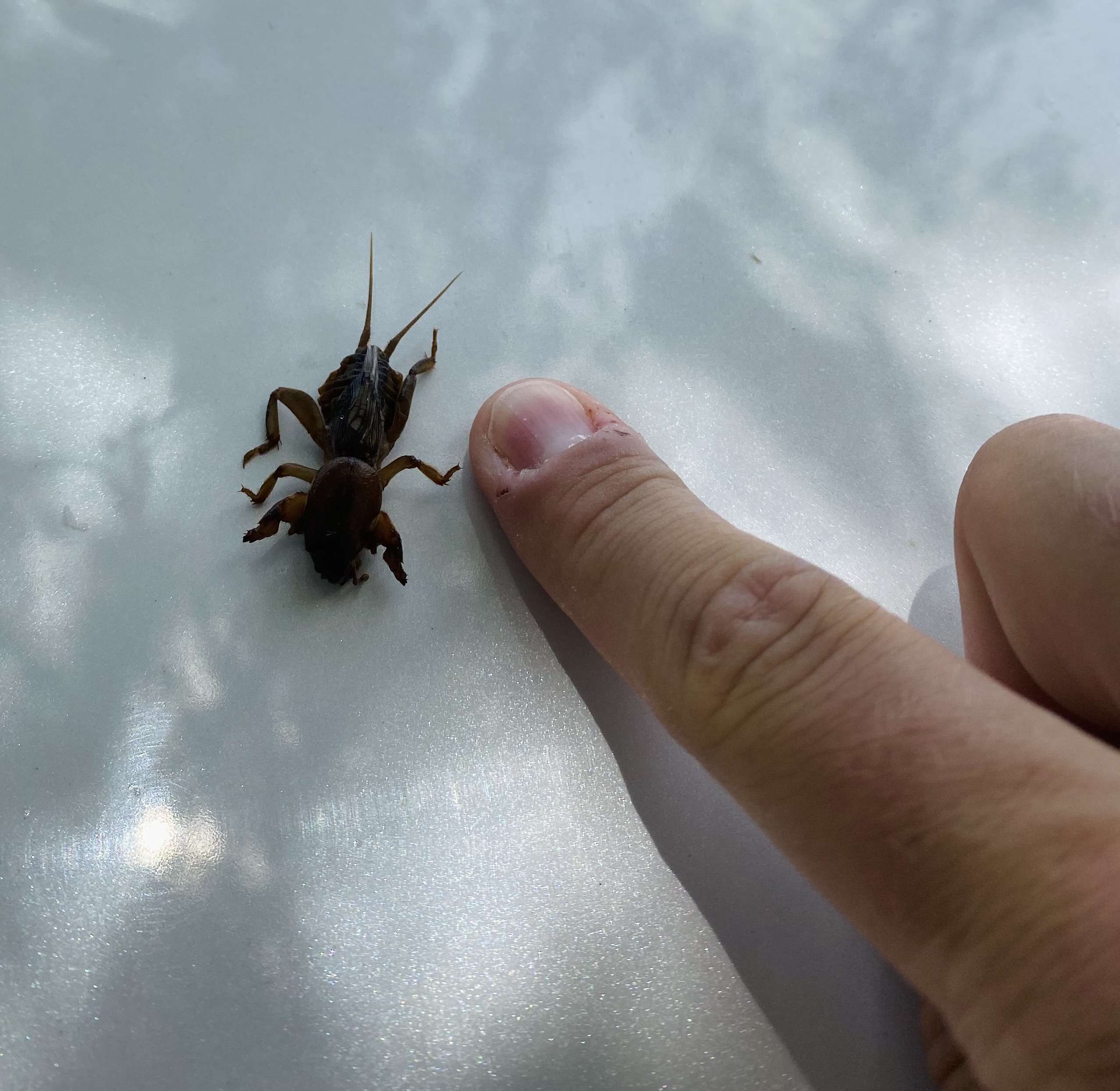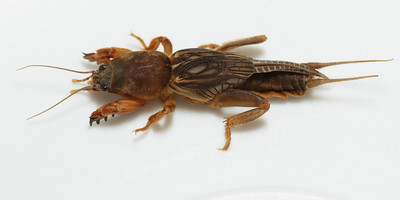Agriculture and Natural Resources Blog
Contact
Jon Zawislak
Assistant Professor, Apiculture and Urban Entomology
Phone: 501-671-2222
Fax: 501-671-2252
Email: jzawislak@uada.edu
Office:
University of Arkansas
Division of Agriculture
Cooperative Extension Service
2301 S. University Avenue
Little Rock, AR 72204
Austin Jones
Instructor and Director of Undergraduate Education,
Entomology and Plant Pathology
Phone: 479-575-2445
Email: akj003@uark.edu
Office:
University of Arkansas
Dale Bumpers College of
Agricultural, Food, and Life Sciences
Entomology and Plant Pathology
PTSC 217
University of Arkansas
Fayetteville, AR 72701

Blog Series: What's that bug?
Mole Cricket
By Jon Zawislak, Assistant Professor – Apiculture and Urban Entomology, Austin Jones, Instructor and Director of Undergraduate Education – Entomology and Plant Pathology

Northern Mole Cricket – Neocurtilla hexadactyla
by Abbott Nature Photography, © All rights reserved. Permission granted for one time use of this photo.
Crickets are one of those insects that just about everyone has either seen or heard. Whether you love or hate the chirping serenade male crickets compose to woo their potential mates, their signature sound has become a part of our lives and can symbolize everything from great fortune to an empty theatre. Mole crickets, as the name would imply, are a group of burrowing crickets found in many parts of the world. And like the more familiar orthopteran cousins, the house and field crickets, they broadcast a signature nighttime sound.
Which mole crickets are native to Arkansas?
Two species of mole cricket are known to be native to Arkansas, the more common Northern mole cricket (Neocurtilla hexadactyla) and the rarer prairie mole cricket (Gryllotalpa major). There are also two introduced species of mole cricket from South America, the tawny mole cricket (Neoscapteriscus vicinus) and Southern mole cricket (N. borellii). It is believed these two introduced species arrived in the U.S. in ballast soil carried by ships during the 1800s (the same way the red imported fire ant was introduced). The tawny and Southern mole crickets are found in neighboring Texas and Louisiana, with none yet confirmed in Arkansas.

FEMALE – Adult Northern mole cricket with paddle-like front legs and claws
by Seastone, L. and B. Parks, Museum Collections: Orthoptera, USDA APHIS PPQ (Source: Bugwood.org)
Size and Description of Mole Crickets
Mole crickets can be identified by their strong, stout, paddle-like front legs, with claws used for digging. These fossorial legs (a fancy term for limbs designed for digging) closely resemble the front legs of a mole, and are a great example of how function can dictate form, but it’s not just the legs that are adapted for life underground. Mole crickets have a somewhat bullet-shaped head and stout, streamlined upper bodies to help them move through the soil where our native mole crickets spend most of their lives feeding on roots and shoots of plants. Adult mole crickets have fully developed wings, which help them to disperse via flight, and may occasionally be attracted to lights at night.

JACKSON COUNTY, Arkansas – Mole cricket found on turfgrass at a local golf club
Photo courtesy Joey Penix, Superintendant – Village Creek Golf Club, 2022
Are mole crickets pests?
Typically, our native species are not seen as pests, and no management is required. But in high enough numbers, the Northern mole cricket can become a turfgrass pest by feeding on the plants or because of extensive tunneling underneath the turf and mound formation above, which can become particularly annoying to those maintaining golf greens and other sports fields. Fortunately for us here in The Natural State, most problems associated with mole crickets revolve around the introduced species, which have not yet been reported here. Mole crickets are less common in the well-drained rocky soils of the Ozarks than in other ecoregions of the state, such as the Gulf Coastal Plain, Arkansas River Valley and Delta where moist sandy soils are more prevalent.
More Interesting Facts about Mole Crickets
One of the most unique behaviors of all insects, belongs to male mole crickets. In an effort to be heard, males will dig out an opening to their burrow shaped like a horn, similar to a megaphone, which helps project their song to prospective females and is said to vibrate soils for several inches around the opening. The song itself comes from anatomical structures on the cricket known as the file and scraper. These are located on the insect's wing-bases, and when rubbed against each other, create the chirping sound via stridulation (the rubbing of body parts together to make noise), the same way house and field crickets do. This is similar to how a person would play a washboard in a bluegrass band, rubbing thimble-covered fingers over the ridges of the board.

MOLE CRICKET – approximately 1 inch in length
by Cotinis (Source: Flickr) is licensed under CC BY-NC 2.0
The prairie mole cricket is native only to tallgrass prairies of Arkansas, Oklahoma, Kansas and Missouri, a habitat that has been steadily disappearing over the years. It is the largest cricket in North America, at upwards of 2.5 inches long (other species typically come in between 1-1.5 inches) and is considered quite rare. In the 1980's it was considered to be listed as a threatened species. This status was denied due to a lack of knowledge about the ecology of the species (Howard and Hill, 2007). With few remaining intact tallgrass prairies left, the fate of this species is undoubtedly tied to the management and conservation of these wild areas that serve as windows to the dynamic geologic and ecologic history of our region.
Source
Howard, D. and Hill, P. (2007). The Effect of Fire on Spatial Distributions of Male
Mating Aggregations in Gryllotalpa Major Saussure (Orthoptera: Gryllotalpidae) at
The Nature Conservancy's Tallgrass Prairie Preserve in Oklahoma: Evidence of a Firedependent
Species. Journal of the Kansas Entomological Society, 80(1) : 51-64. https://doi.org/10.2317/0022-8567(2007)80[51:TEOFOS]2.0.CO;2